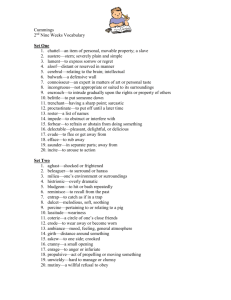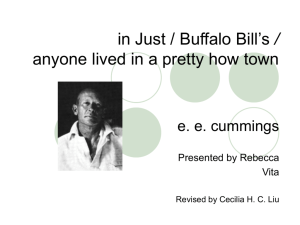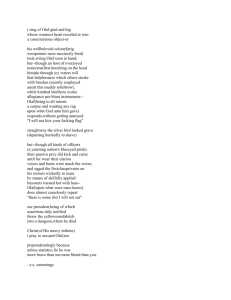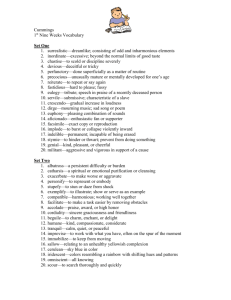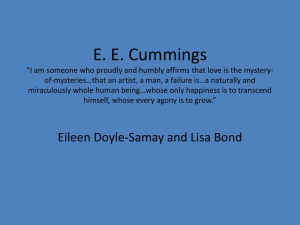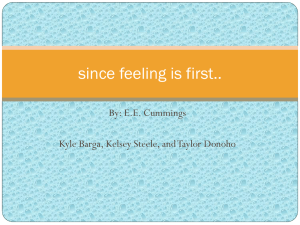The Case for Verlag, 2008) Cummings: A Reaction to the Critical
advertisement
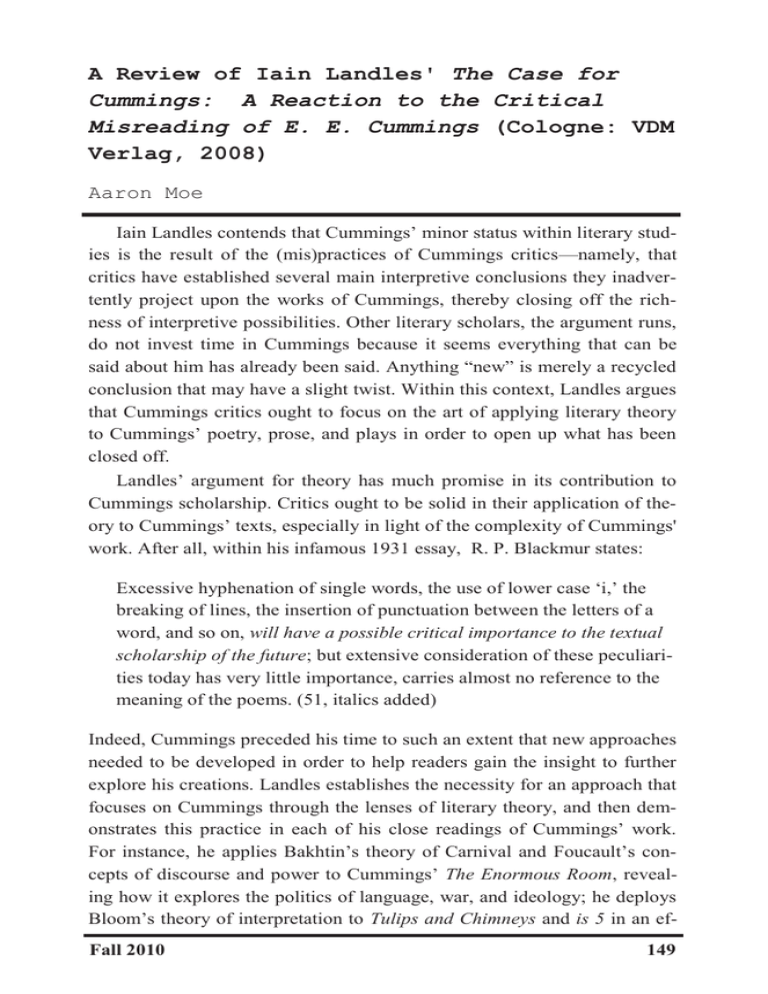
A Review of Iain Landles' The Case for Cummings: A Reaction to the Critical Misreading of E. E. Cummings (Cologne: VDM Verlag, 2008) Aaron Moe Iain Landles contends that Cummings’ minor status within literary studies is the result of the (mis)practices of Cummings critics—namely, that critics have established several main interpretive conclusions they inadvertently project upon the works of Cummings, thereby closing off the richness of interpretive possibilities. Other literary scholars, the argument runs, do not invest time in Cummings because it seems everything that can be said about him has already been said. Anything “new” is merely a recycled conclusion that may have a slight twist. Within this context, Landles argues that Cummings critics ought to focus on the art of applying literary theory to Cummings’ poetry, prose, and plays in order to open up what has been closed off. Landles’ argument for theory has much promise in its contribution to Cummings scholarship. Critics ought to be solid in their application of theory to Cummings’ texts, especially in light of the complexity of Cummings' work. After all, within his infamous 1931 essay, R. P. Blackmur states: Excessive hyphenation of single words, the use of lower case ‘i,’ the breaking of lines, the insertion of punctuation between the letters of a word, and so on, will have a possible critical importance to the textual scholarship of the future; but extensive consideration of these peculiarities today has very little importance, carries almost no reference to the meaning of the poems. (51, italics added) Indeed, Cummings preceded his time to such an extent that new approaches needed to be developed in order to help readers gain the insight to further explore his creations. Landles establishes the necessity for an approach that focuses on Cummings through the lenses of literary theory, and then demonstrates this practice in each of his close readings of Cummings’ work. For instance, he applies Bakhtin’s theory of Carnival and Foucault’s concepts of discourse and power to Cummings’ The Enormous Room, revealing how it explores the politics of language, war, and ideology; he deploys Bloom’s theory of interpretation to Tulips and Chimneys and is 5 in an efFall 2010 149 fort to recast Cummings early poetic explorations of sex; he uses Bakhtin’s heteroglossia to illuminate the many voices within the poem “candles and” (CP 280), thereby exploring the poem's layered satire; and he applies Bakhtin’s dialogics and Helene Cixous’ ecriture feminine to Cummings’ play Him, innovatively foregrounding the overlooked character Me. In each of these readings and others, Landles first recapitulates the history of the criticism of the given text—highlighting the dearth of post-structural theories as well as the (mis)practices of critics who project established interpretive conclusions upon Cummings' texts—and then he argues for a more open-minded approach. He is most convincing when in the midst of a close reading that is charged with the solid and innovative application of theory. However, Landles seems too simplistic in his readings of Cummings’ attitudes towards sex, relying heavily upon biographical information and placing the poems into two categories: those that exhibit positive attitudes and those that display negative attitudes towards sex. Ironically, doing so closes off the possibility of a more nuanced reading that acknowledges not just two, but several attitudes interacting. Also, Landles’ argument that pins Cummings’ minor status (within literary studies) solely upon the (mis) practices of Cummings critics is suspect from the beginning. Any effect worth scrutiny is never the result of a single cause; it is always the result of several interactive and complex causes. Furthermore, his aggressive approach sets up an unintended consequence. Upon finishing, readers may spend more time debating the legitimacy of the claim that Cummings is a minor poet, and if so, whether or not the critics are to blame. As a result, his indictment of Cummings critics nearly overshadows his call for innovative applications of theory. Perhaps it is the timing of Landles’ publication, for a survey of the work of Cummings scholars during the last ten years as exhibited in conferences and journals reveals several scholars approaching Cummings with innovative applications of theory, coupled with solid close readings. Neglecting to mention such work in his book, Landles becomes a solitary voice in the desert, unable or unwilling to hear the many voices contributing to the exploration of the vast poetic landscape Cummings created. Despite this, The Case for Cummings concludes with a call for Cummings critics be wary of projecting any standard readings upon Cummings’ works without first approaching them from a fresh theoretical angle—a call for a commitment to interpretive openness in order to reveal how Cummings is just as worthy a poet as any of his modernist contemporaries. This 150 Spring 17 call, though complicated by the aforementioned issues, has the potential to shape the evolution of Cummings scholarship for the better. Works Cited Blackmur, R. P. "Notes on E. E. Cummings' Language." E. E. Cummings and the Critics. East Lansing: Michigan State UP, 1962. 50-67. Cummings, E. E. Complete Poems 1904-1962. Ed. George James Firmage. New York: Liveright, 1991. —. Him. New York: Liveright, 1927. —. is 5. Ed. George James Firmage. New York: Liverighty, 1985. —. The Enormous Room. Ed. George James Firmage. New York: Liveright, 1985. —. Tulips & Chimneys. Ed. George James Firmage. New York: Liveright, 1976. Landles, Iain. The Case for Cummings: A Reaction to the Critical Misreading of E. E. Cummings. Saarbrücken: VDM Verlag, 2008. Fall 2010 151


